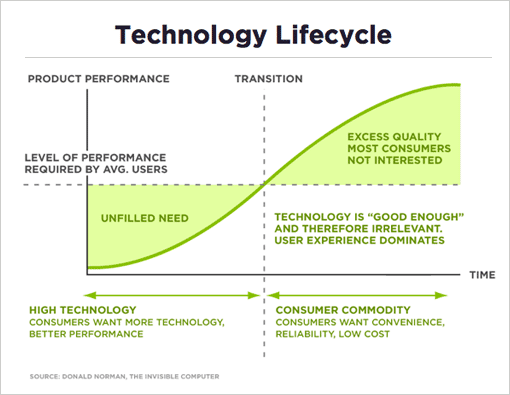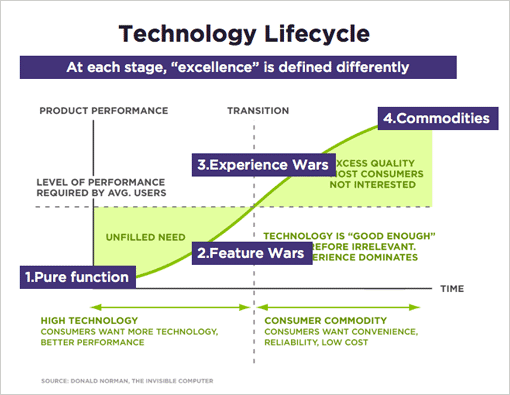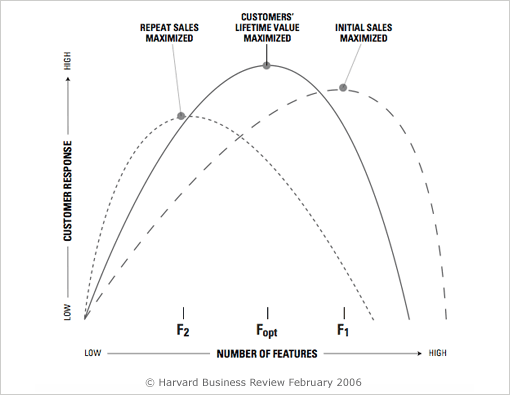Recently I was asked to compile my thoughts on product excellence. In particular, what defines great products and what can organizations do to deliver product excellence.
While it’s common to define great products through blanket measures like customer satisfaction, retention, or likelihood to recommend, I believe measuring what makes products excellent is a more nuanced affair. In fact, the factors that make a product great are largely dependent on its place in the product lifecycle.

In his book, The Invisible Computer, Don Norman has a great representation of the technology lifecycle. When products are able to fill an unmet need, function is often the primary factor for product excellence. “I wasn’t able to do that before, now I can –wow!” When functionality becomes an expectation, product excellence becomes increasingly measured by user experience. “This product makes me feel great when I use it.”
Layering Jared Spool’s Stages of Technology onto Norman’s graph illustrates this point further.

Stage 1 Pure function is all that matters: If the one thing it does is the only option available, people will be happy with it.
Stage 2 Feature Wars: The number of features matters because frequently the buyer doesn't understand what each feature actually means. Later in this phase, specific features do make a difference as people are looking for certain features to make their purchase decisions.
Stage 3 Experience Wars: The experience and total cost of ownership matters most. Products with fewer -but better- features will trump the more feature-laden winners of Stage II.
Stage 4 Commodities: The actual item becomes absorbed into a larger product mix. Individual features of the technology no longer matter, but become a price/performance issue for the integrator.
In each of these stages, product excellence can be measured differently. In stage one, product excellence is measured by function alone. In stage two, product excellence is measured by feature inclusion and integration. In Stage three, product excellence is measured by the overall user experience. And finally in stage four, product excellence is measured by integration into other products.
In fact these measures can be refined further still. If we simply look at Stage two, product excellence can be judged based on how the feature mix skews toward repeat sales, initial sales, or lifetime value as illustrated in this chart from Harvard Business Review.

So a definition of product excellence is not only dependent on where in the technology lifecycle a product is but also on the customer relationship it is optimized for.